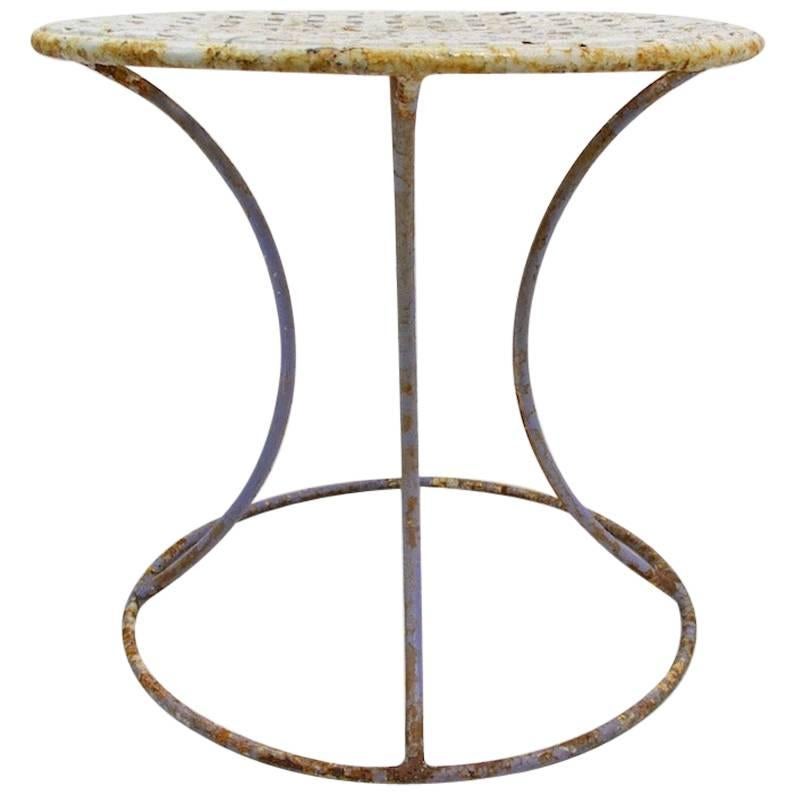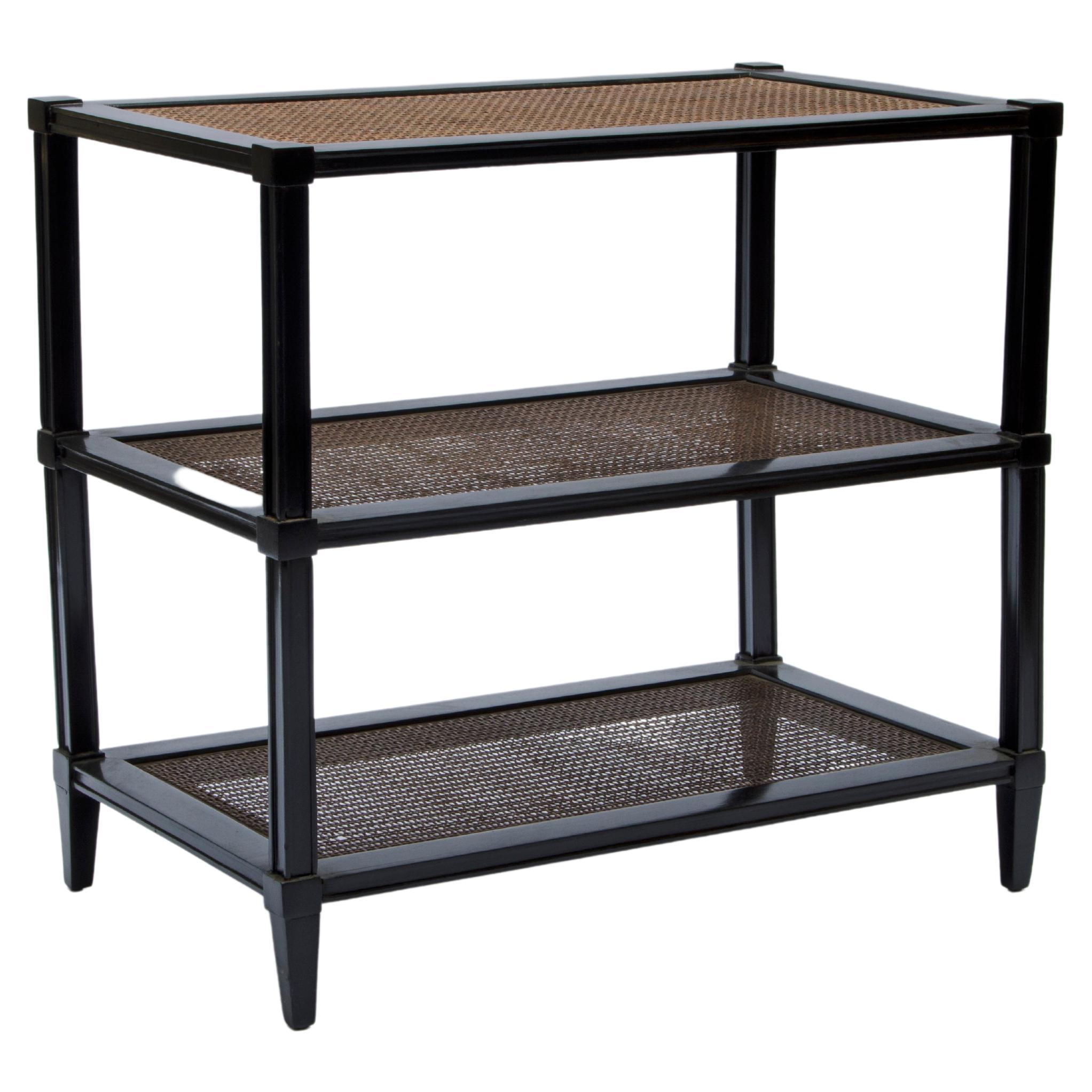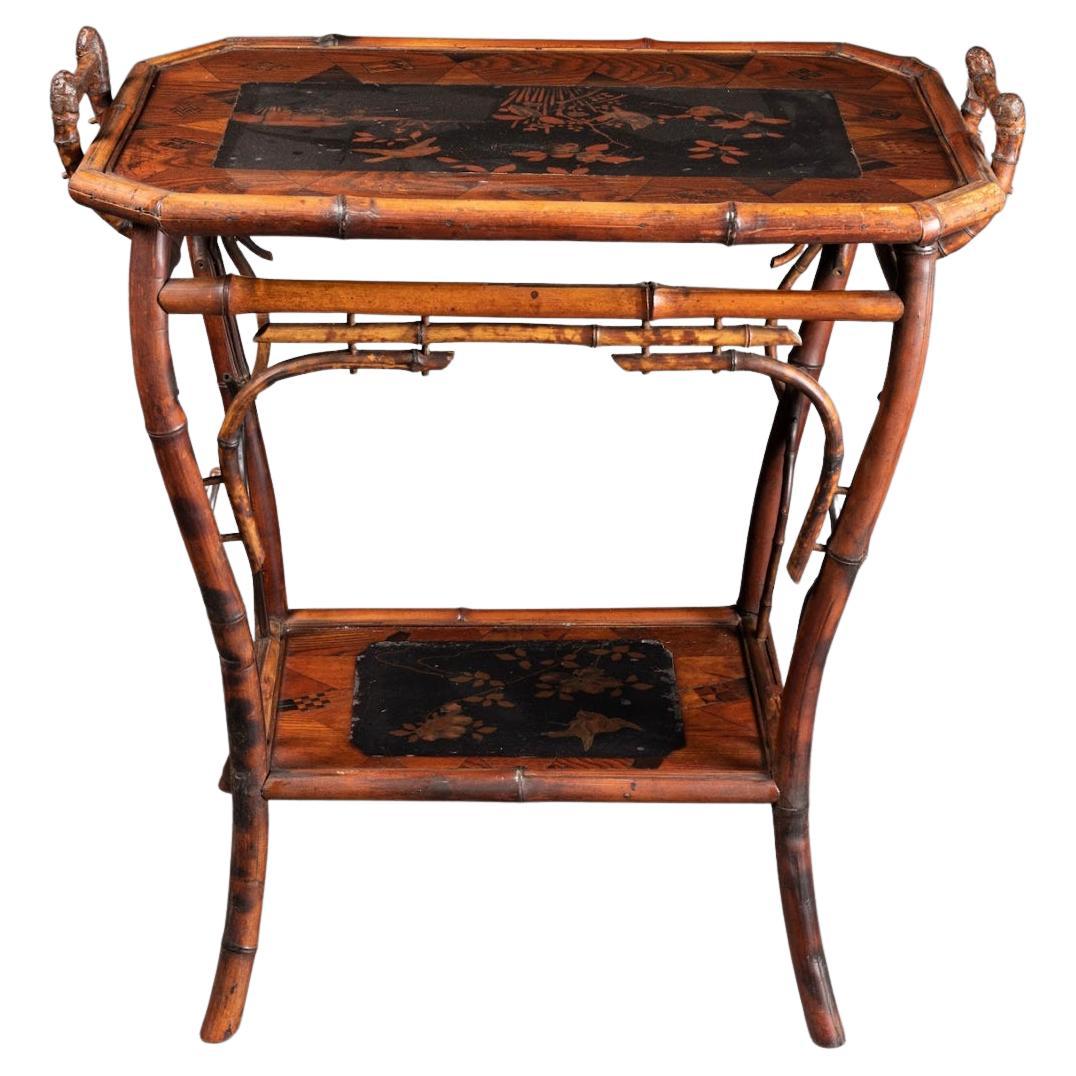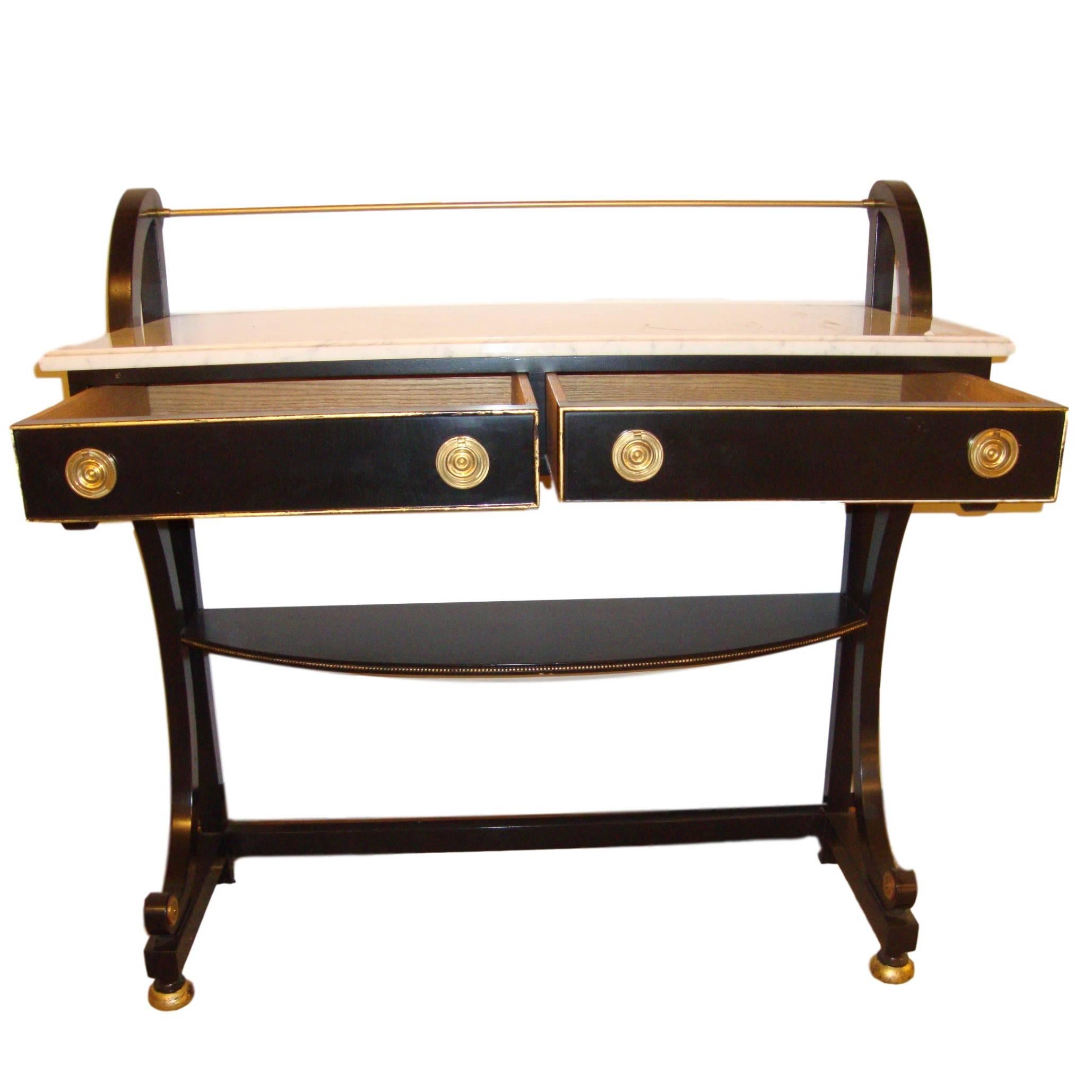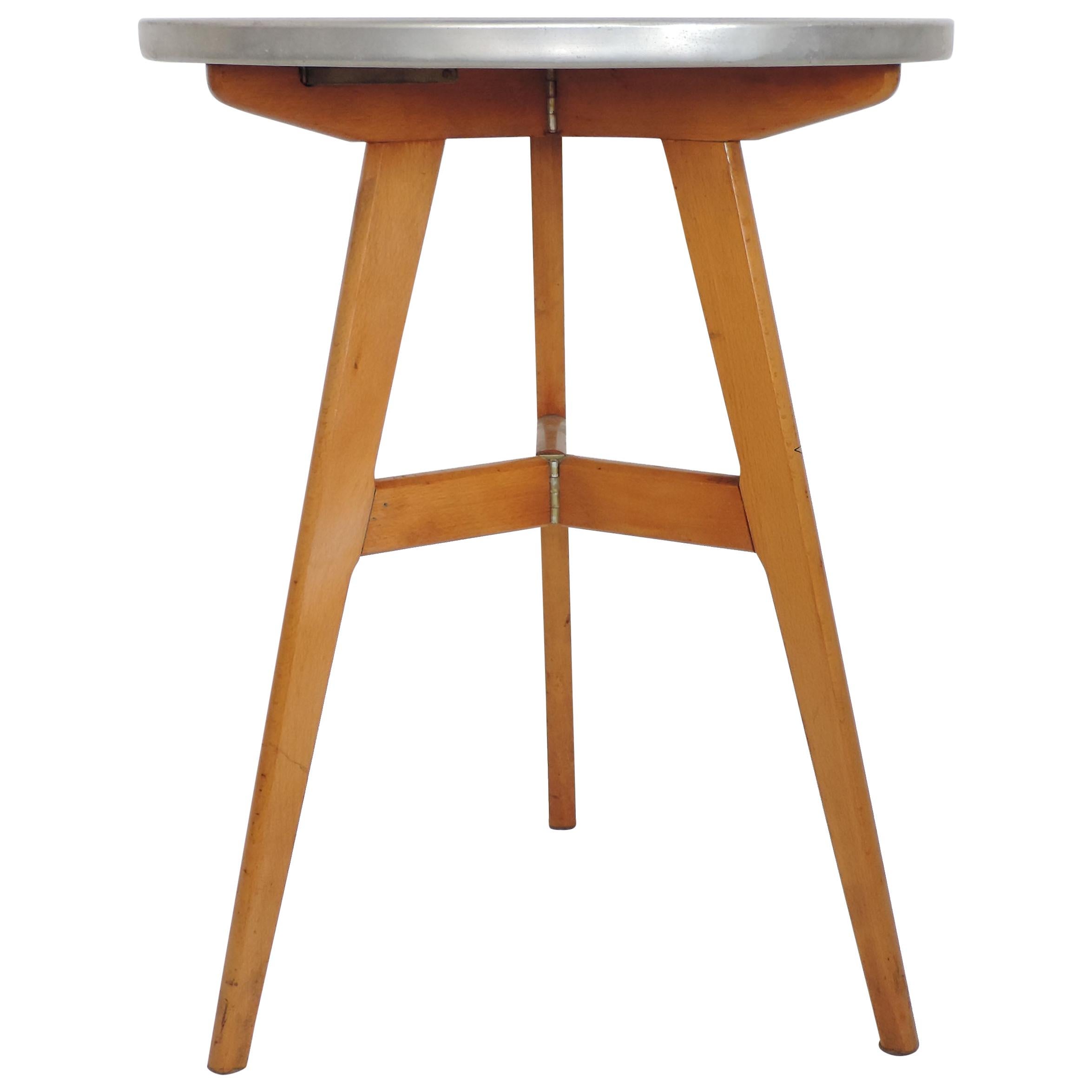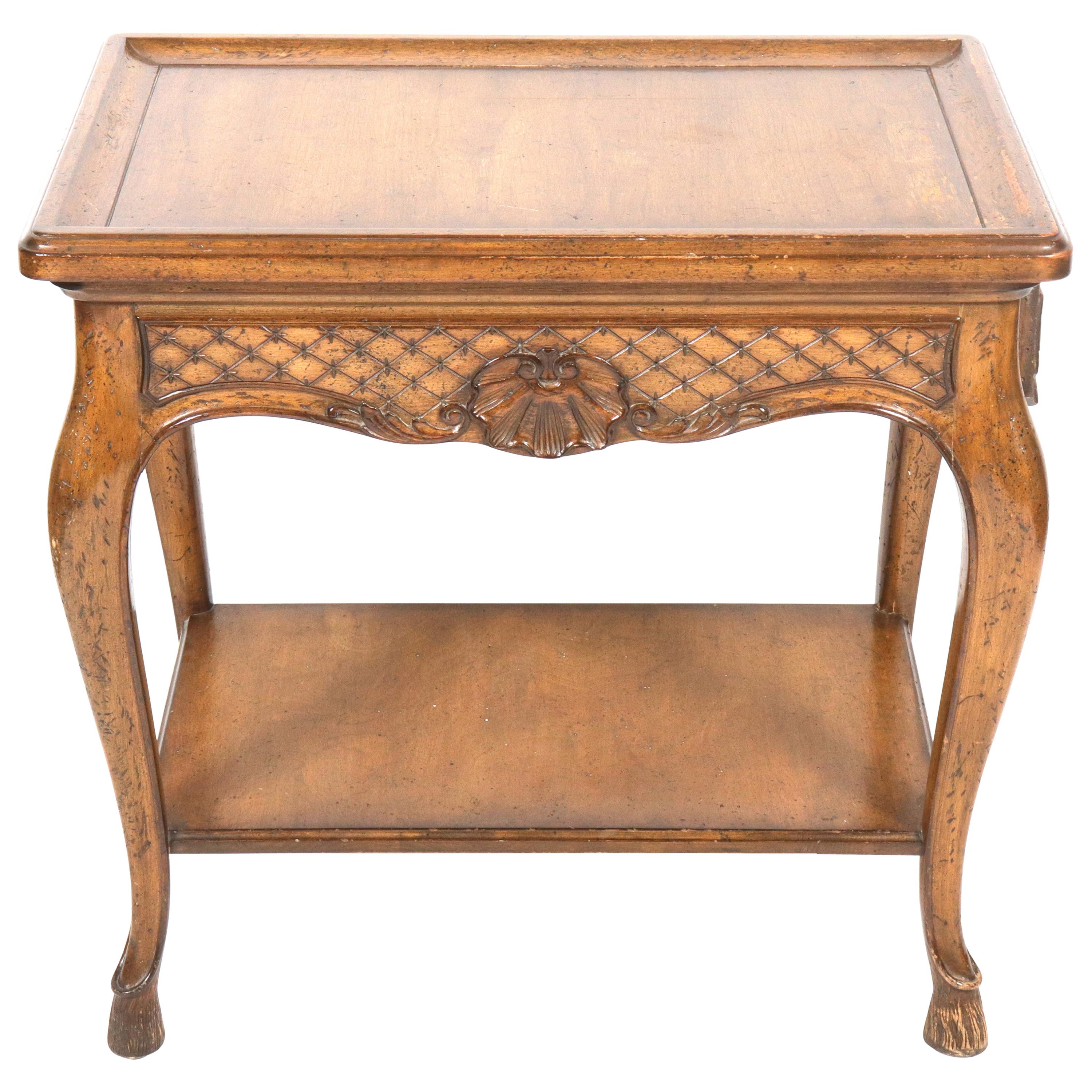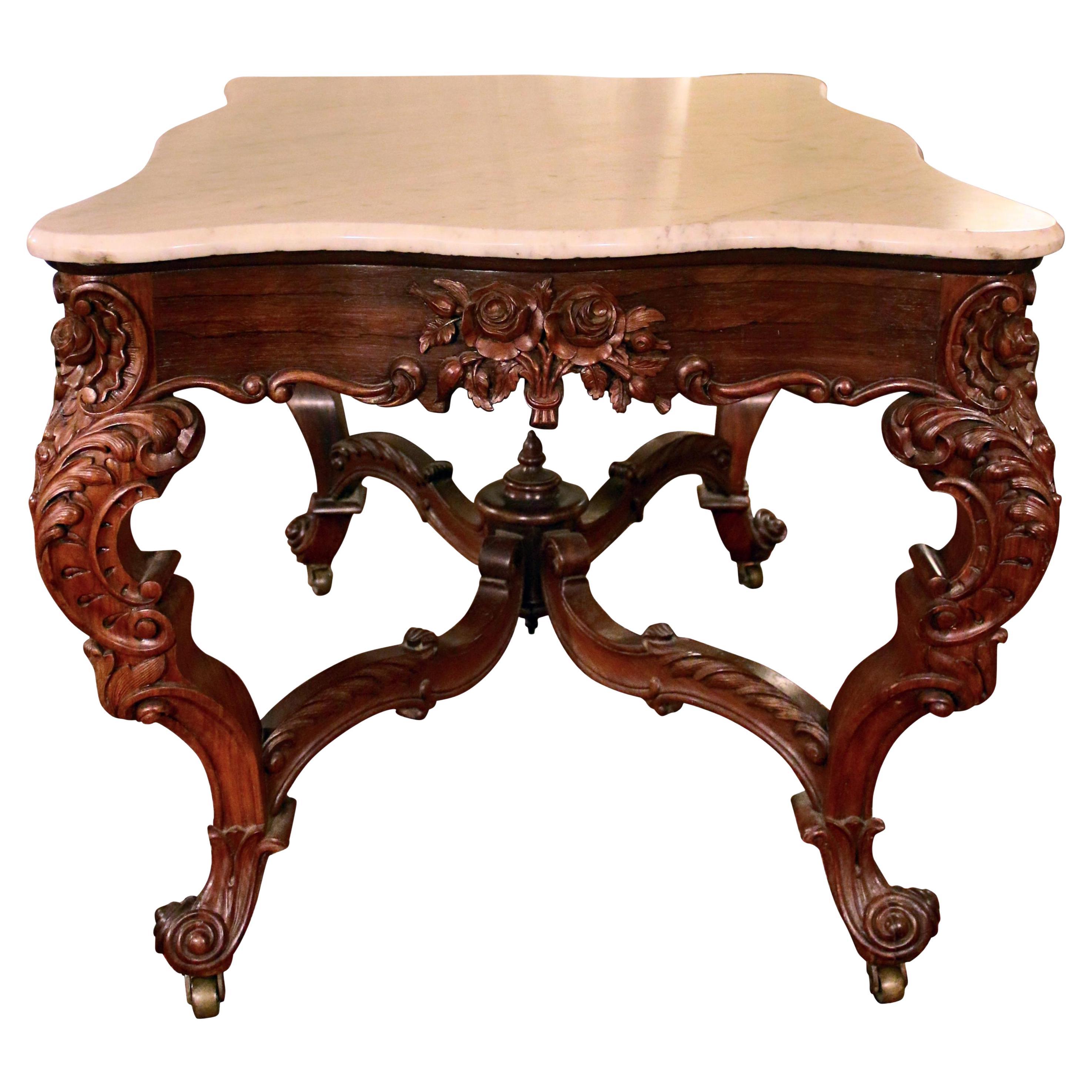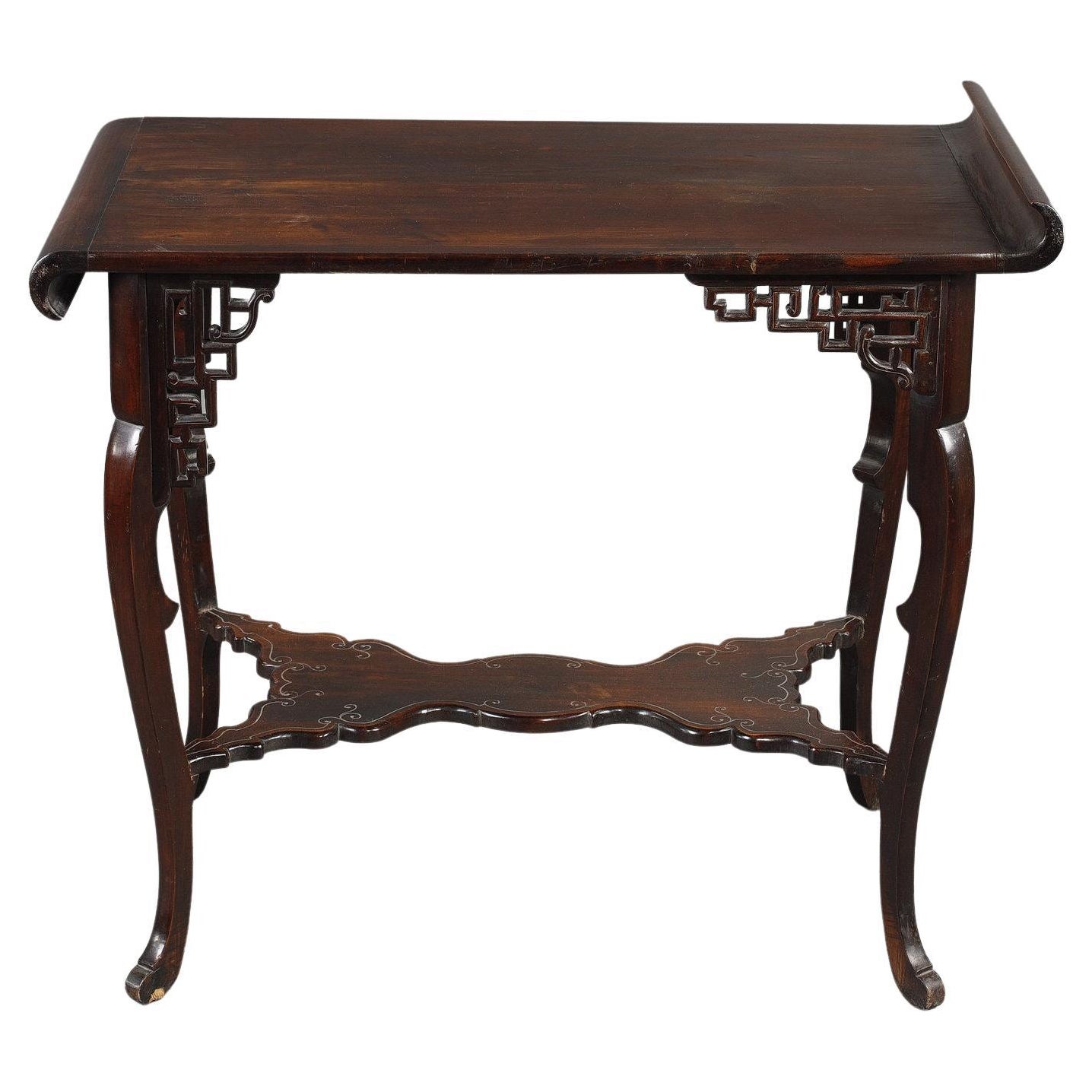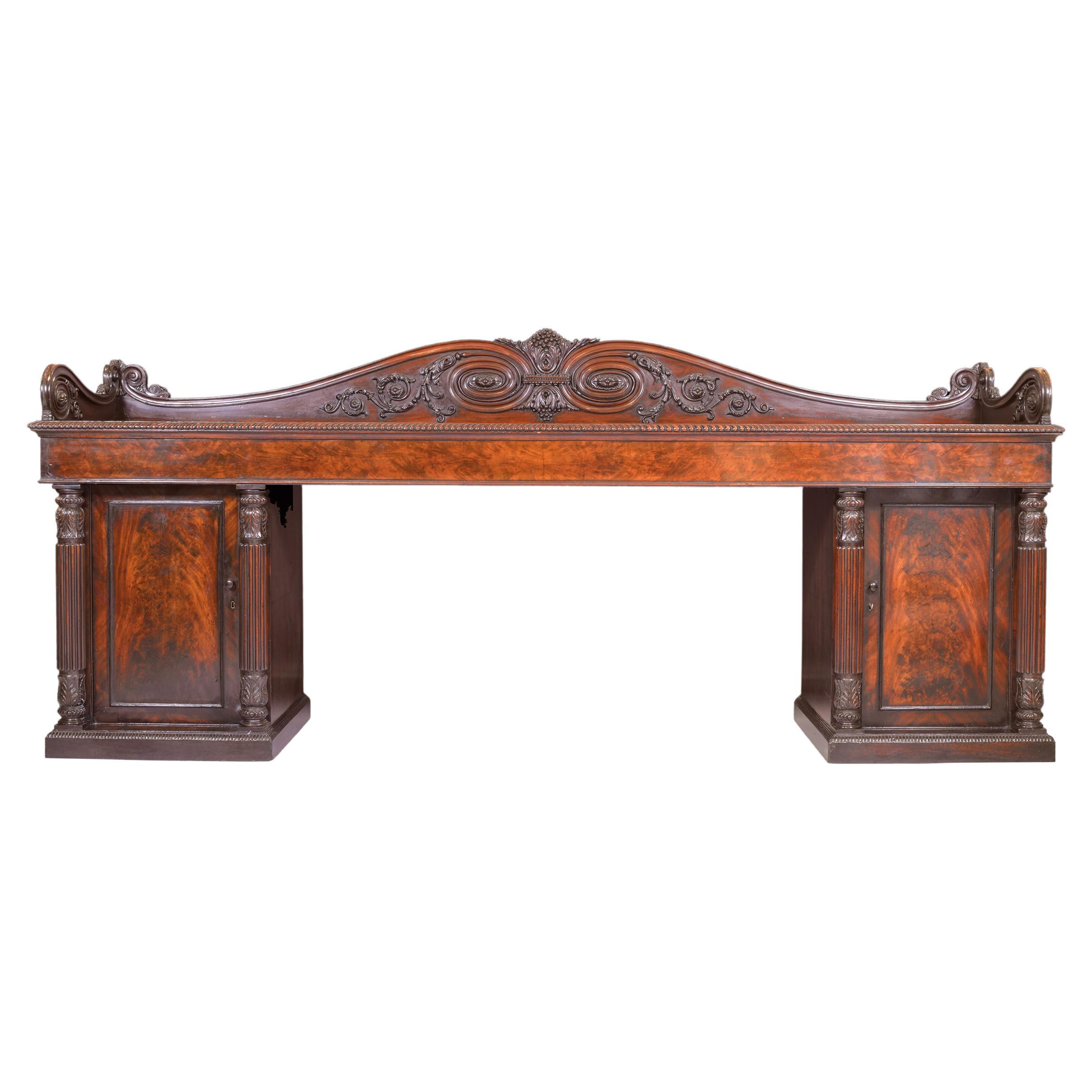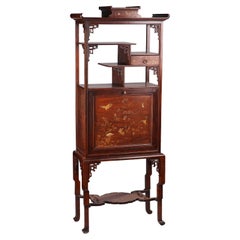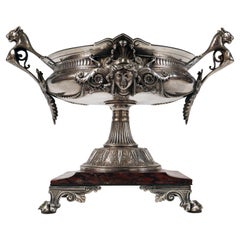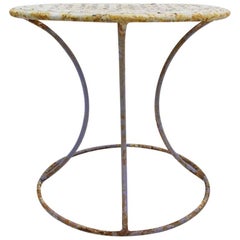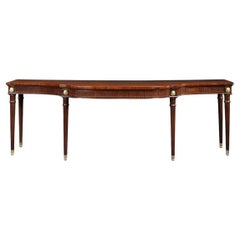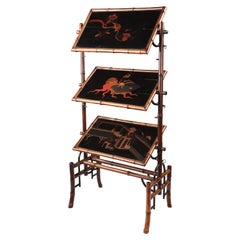
Japan Lacquer Servant Table Attributed to A. Perret & E. Vibert, France, c. 1880
View Similar Items
Want more images or videos?
Request additional images or videos from the seller
1 of 6
Japan Lacquer Servant Table Attributed to A. Perret & E. Vibert, France, c. 1880
About the Item
- Dimensions:Height: 41.74 in (106 cm)Width: 18.9 in (48 cm)Depth: 12.21 in (31 cm)
- Style:Japonisme (In the Style Of)
- Materials and Techniques:
- Place of Origin:
- Period:
- Date of Manufacture:circa 1880
- Condition:Wear consistent with age and use. Minor fading.
- Seller Location:PARIS, FR
- Reference Number:Seller: 1508/481stDibs: LU3860313043202
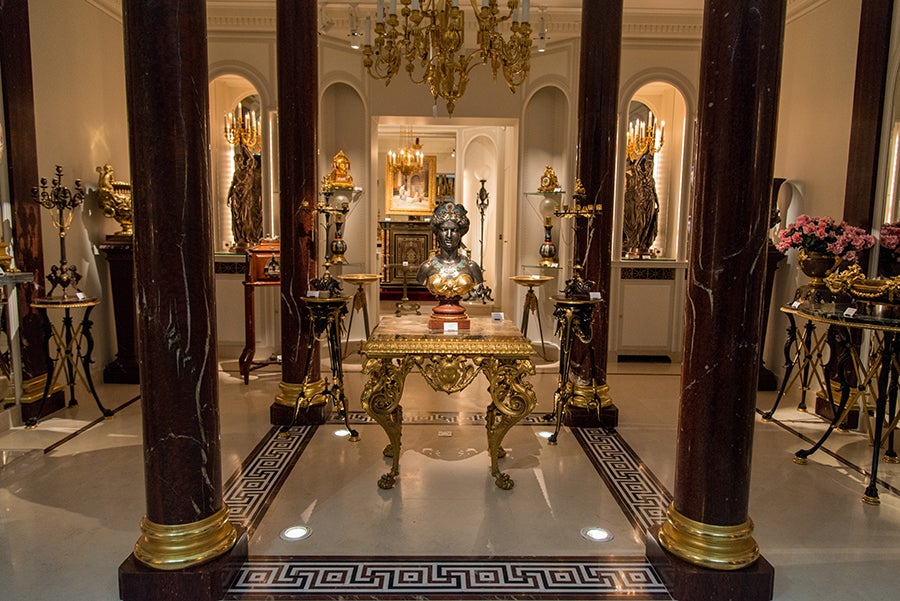
About the Seller
4.9
Vetted Seller
These experienced sellers undergo a comprehensive evaluation by our team of in-house experts.
Established in 1997
1stDibs seller since 2018
74 sales on 1stDibs
Associations
International Confederation of Art and Antique Dealers' Associations
More From This SellerView All
- Japanese Style Cabinet-Secretary Att. to Perret & Vibert, France, circa 1880By Perret et VibertLocated in PARIS, FRA Japanese style carved wood cabinet, with a painted decor imitating Japanese lacquer, ornamented with flowers, birds and butterflies. Opening onto two drawers and a paper filer, the upright-secretary door is also fitted with red velvet. Surmounted by a drawer and asymmetrical shelves, composed in the Japanese « zen » spirit, the cabinet stands on four legs joined by an engraved stretcher. The great influence of the Far-East, through China and Japan, in the second half of the 19th century French art could be found first in painting and soon after in decorative arts and furniture as well. Following the Franco-English military campaign led in 1860 against the Imperial army in China, the French troops of Napoleon III brought back from the Summer Palace, a part of the Chinese Imperial court treasure, which will make up the famous Chinese Museum of Empress Eugénie at the Fontainebleau Palace. The French artists won’t be long to take inspiration from those exotic and sumptuous objects for their creations, as they used to do in the 18th century, when the best French cabinet-makers adapted the Chinese lacquers on the luxurious royal chests. But the influence of Japan, at the Meiji period (1868-1912), came also very quickly to France, thanks to the opening of the country in the middle of the 19th century, as well as the development of traveling and the amazing Universal Exhibitions, in which Japan participated for the first time in 1867 in Paris. Then many Japanese objects and prints were imported to France and to all Europe, and for which some collectors spent already fortunes. With Manet and Impressionists generation, the passion for Japanese art, more than a simple taste for an exotic style, was still in fashion until the turn of the 19th century. It provoked not only a craze among the French aristocratic families as well as the wealthy Paris high society, wishing renew their mansion inner decoration, but turned also to a real revolutionary movement among the “avant-garde” artists. Those artists, whoever they were, painters, cabinet-makers or designers of ceramic, bronze and crystal objects, adapted then those techniques and naturalistic motifs unknown until this time. Christofle, very famous since 1867 as a silversmith, was also one of the leaders among the inventors of Japanism. He knew how to use Japanese elements to his own splendid works made in silver or “cloisonné” enameled bronze. During the 1878 Paris Universal Exhibition, Christofle presented with great success his life-sized bronze Japanese ladies torcheres, executed by the renowned sculptor Guillemin. Another famous company to be mentioned, is “L’Escalier de Cristal”, producing art objects and furniture, all of high standard quality and innovating much with their Japanese decor. Highly remarked during the Universal Exhibitions, “L’Escalier de Cristal” collaborated with the greatest artists, such Gallé and Rousseau for glass- and ceramic wares, and the cabinet-makers Lièvre and Viardot, whom made furniture including sometimes authentic Japanese elements. In 1872, Alfred Perret and Ernest Vibert opened in Paris, at 33 rue du Quatre-Septembre a store that offered “natural bamboo furniture and cane seats” and all kinds of textile fittings for furniture. This furniture used for winter gardens and terraces of mansions knew then a resounding success. They developed their business around 1884 with their Japanese style furniture, very close to that executed by Gabriel Viardot (1830-1906). In 1886, the company appearing in the category of “Chinoiserie and Japoneries” offered, in addition to furniture and seating creation, works of art and inlaid furniture directly imported from the Far East ; an activity that expanded rapidly. Their exotic fantasy furniture presented at the Universal Exhibition of Paris in 1889 and 1900, rewarded them two silver medals. In 1894, the company was listed under the name “Perret et Vibert”, headed by the son of Alfred Perret and Ernest Vibert. The same year, they redesigned their store on rue du Quatre-Septembre, creating ten new show-rooms, showing complete furniture sets of Japanese and Chinese style inspiration. It was not until 1895, that the company was finally named “La Maison des Bambous” and organized then in their shops an “exhibition of country furniture and seats for castles and villas”, which was visited by Empress Eugenie to furnish her villa Cyrnos at Cap Martin. She actually was a regular customer of the “Maison des Bambous” as she bought repeatedly furniture. In October of the same year, the king of Greece...Category
Antique 1880s French Japonisme Secretaires
MaterialsWood
- Neo-Greek Silvered Bronze Bowl Attributed to G. Servant, France, circa 1880By Georges Emile Henri ServantLocated in PARIS, FRBeautiful silvered bronze neo-Greek style bowl in a circular shape, adorned on the body with female masks in the antique style and on the sides with handles in the shape of busts of ...Category
Antique 1880s French Greek Revival Decorative Bowls
MaterialsGriotte Marble, Bronze
- Japanese Style Cabinet-Secretary Attributed to G. Viardot, France, Circa 1880By Gabriel ViardotLocated in PARIS, FRA Japanese style carved wood cabinet attributed to G. Viardot. A painted decor imitating Japanese lacquer, ornamented with flowers, birds and butterflies. Opening onto two drawers an...Category
Antique 1880s French Japonisme Cabinets
MaterialsWood, Paint
- "Pagoda" table, Attributed to G. Viardot, France, Circa 1880By Gabriel ViardotLocated in PARIS, FRCharming Japanese-inspired « pagoda » table in tinted and carved wood attributed to G. Viardot. The rectangular top rests on four slightly curved legs adorned with openwork and sculpted geometric interlacing, joined by an engraved stretcher with a stylized cutout. Gabriel Viardot career began as a wood carver and he produced small furniture, sculpturally carved with naturalistic motifs and animals. In the 1855 Universal Exhibition in Paris, his finely sculpted objects were well received. However, with the increasing importation of similarly produced Swiss and German articles, he found less opportunity for these and decided to innovate. G. Viardot succeeded to his father's business in 1861 installed rue Rambuteau in Paris. Around 1870 he turned to the idea of producing « Meubles genre Chinois et Japonais ». The taste in Europe for exotic furniture, incorporating sometimes authentic Chinese or Japanese objects...Category
Antique 1880s French Japonisme Tables
MaterialsWood
- Pair of Neo-Greek Pedestals, attributed to G.Servant, France, Circa 1880By Georges Emile Henri ServantLocated in PARIS, FRPair of patinated and gilded bronze turntable pedestals with for each of them, three paw feet, headed by stylized lion muzzles, ornated with beaded chains and joined by a fine foliate stretcher. The belt is adorned by a banded frieze cast in low-relief representing an ancient scene : “The Battle of the Lapithes and the Centaurs”. These pedestals can be associated with the "Vases de Bacchus", presented by G. Servant at the 1867 Exposition Universelle, on which the similar ornamentation is applied. (Reproduced in « Merveilles de l'Exposition Universelle de 1867 », Jules Mesnard, p°167) Biography : Georges Emile Henri Servant...Category
Antique 1880s French Greek Revival Pedestals
MaterialsBronze
- Charming Japanese Style Tray Attributed to l'Escalier de Cristal, France, c.1880By L'Escalier de CristalLocated in PARIS, FRRare Japanese style diamond-shaped tray attributed to l'Escalier de Cristal, representing lake landscapes in cartouches, and adorned in its center with a lunch scene with a Japanese couple in traditional dress, all highlighted by a gilded decor of flowering branches on a pink porcelain background. The whole is framed by a gilded openwork bronze mount ending on the sides by two handles. “L’Escalier de Cristal”, an old and famous Parisian firm, specialized in glass products and ceramics but also suggested furniture and bronze sculptures. It was led from 1885 to 1923 by Emile Pannier’s sons, who gave the name of Pannier Frères to the society, located at the corner of Scribe street and Auber street, next to the new built Paris Opera house. Their Japanese style creations were among many others much appreciated by the critics and the public. They were awarded many medals at various exhibitions, such as the Gold medal at the 1900 Paris Universal Exhibition. Lots of artists participated in that world success, such as Emile Gallé, who gave to Pannier Frères the exclusive rights of some of his models, or François-Eugène Rousseau, who designed many vases and gave the model of his successful Japanese style dining-set as well. This set was made by the Creil et Montereau Manufacture. In the Japanese style furniture...Category
Antique 1880s French Japonisme Decorative Dishes and Vide-Poche
MaterialsBronze
$9,591 Sale Price23% Off
You May Also Like
- Wrought Iron Side Table Attributed to WoodardBy Woodard Furniture Co.Located in New York, NYStylish wrought iron stand having weave pattern top, with waisted form base. This example is currently in old paint finish, usable as is, or we can provide custom powder coat finish ...Category
Mid-20th Century American Mid-Century Modern Patio and Garden Furniture
MaterialsWrought Iron
- Beech Wood Table Attributed to Jean-Michel FrankBy Jean-Michel FrankLocated in Ciudad Autónoma Buenos Aires, CTable with three planes, made of Beech wood, lacquered in black and with the original manufacturing mat shelves. Design attributed to by Jean-Michel Frank (1895-1941). France, CIR...Category
Vintage 1930s French Art Deco Side Tables
MaterialsBeech
- Large Regency Mahogany Serving Table Attributed to GillowsBy Gillows of Lancaster & LondonLocated in Lymington, HampshireA large Regency mahogany serving table attributed to Gillows, the shaped top above a fluted frieze with four superb ormolu lion’s mask r...Category
Antique 1810s English Regency Serving Tables
MaterialsMahogany
- Perret et Vibert Bamboo Side TableBy Perret et VibertLocated in Paris, FRPerret et Vibert bamboo side table. The two trays in bamboo veneer with a black lacquered center. France, circa 1880.Category
Antique Late 19th Century French Side Tables
MaterialsBamboo
- Palisandro and Mahogany Console Table Attributed to Vittorio DassiLocated in Hanover, MA1950s Italian console table or hunt board, in the manner of Paolo Buffa, rests on 4 fluted tapering column legs with brass sabots. Four dr...Category
Vintage 1950s Italian Mid-Century Modern Console Tables
MaterialsGlass, Mahogany, Rosewood
- Ebonized Marble-Top Server or Sofa Table Attributed to JansenBy Maison JansenLocated in Stamford, CTAn ebonized marble-top server attributed Jansen. Having a pair of drawers with oak secondaries this finely ebonized server sideboard depicts the Hollywood Regency Era wonderfully. Th...Category
Vintage 1940s French Hollywood Regency Serving Tables
MaterialsWood
Recently Viewed
View AllMore Ways To Browse
19th C Chinese Bird On A Rock
Octopus Cabinet
Bronze Male Chinese Figure
Maison Des Bambous
Chinese Inlaid Trays
Chinese Red Lacquer Tray
French Style Greenhouse
19th C Chinoiserie Bamboo
Octopus Bronze Table
Cane And Lacquer End Tables
Red Tray Table Chinoiserie
Perret And Vibert
George Japanned Style Cabinet
Japanese Octopus
Universal Furniture China Cabinet
Red Lacquered Chinoiserie Dining Table
19th Century Rattan Bamboo Tables
